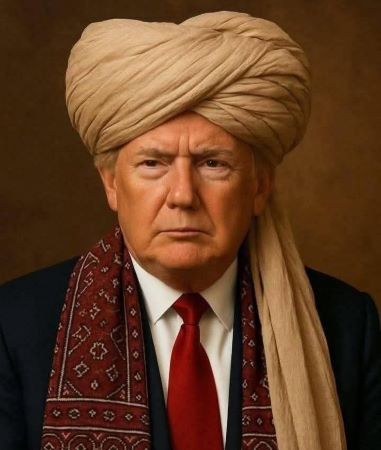India-Pakistan War: Satire, Sarcasm, and Social Media

By Nasir Aijaz
The AsiaN Representative
Islamabad: In a tense and unprecedented episode, India and Pakistan engaged in a four-day period of military duress that many called an undeclared war.
While the world watched anxiously, ordinary citizens and social media users countrywide turned the conflict into a mirror reflecting their anxieties, frustrations, and humor. Through satirical posts and sarcastic remarks, they exposed not only propaganda but also deeper issues of governance, identity, and regional perceptions.
One of the most pointed comments came from renowned Pakistani satirist Anwar Maqsood, who said: “Modi should come out of the grief of the downing of the Rafael jet. He should be thankful we didn’t down his government, for which we have 75 years of experience.”
This witty remark encapsulated the bitter irony that, despite the tit-for-tat military exchanges, the real battle was often fought in the realm of politics and perception. It also subtly pointed to the frustration with leadership, hinting that adversarial rhetoric often masks deeper systemic issues.
Beyond the headlines, social media depicted society in a state of familiar chaos—corruption, dishonesty, and lawlessness—regardless of the supposed conflict. Descriptions of milk sellers watering down their milk, traders indulging in scams, and criminals resuming their illicit activities painted a picture of a nation struggling with governance and morality when the spotlight wasn’t on it. The punch sentence was: “The life in Pakistan has returned to normalcy.”
Some comments reflected feelings of abandonment and disappointment:
– “No Muslim nation came forward in support of Pakistan.”
– “Not any Muslim country, but China, a communist country, helped Pakistan.”
Such remarks exposed a perception that regional solidarity was lacking, and that Pakistan’s reliance on allies, like China, was a matter of necessity.
The social media humor was also unrelenting on militarism and mockery. An Indian army chief’s joke—asked why worries persisted even after Pakistani jets retreated—came with the mocking reply:
“The jets were inscribed with ‘Don’t worry, we will come back.’”
Similarly, jokes about Indian pilots also appeared on social media, questioning if they were recruited through corrupt provincial institutions, such as Sindh’s Public Service Commission, notorious for recruiting the professionals on payment of heavy bribes.
Several memes and comments ridiculed Indian media narratives claiming the destruction of Karachi, asserting that the real devastation was due to Pakistan’s own government, notably the PPP, a party ruling Sindh for the last 17 years. Social media users sarcastically suggested that India should cease fake propaganda—because, after all, the destruction was entirely ‘self-inflicted.’
Citizens joked about India’s water blockade being ineffective, sarcastically suggesting Karachi Water Board should handle the issue, being infamous for creating shortage of water in the metropolis.
A social media user, commenting the use of Chinese technology, with one comment humorously lamenting, wrote: “We are still using Chinese stuff; Dr. Qadeer Khan’s nuclear bombs are yet to be deployed!” This remark reflected a threat to India.
In an act of theatrical protest, Kamran Tisori, the Sindh governor, (A member of an ethnic organization MQM) burned mock models of Indian Rafael jets in what he called a ‘publicity stunt.’ Social media critics called out the insincerity, branding the event as just another cheap promotional spectacle.
A humorous episode involved an Indian drone falling in Sargodha, Pakistan. A man sold it to a scrap dealer, only for police to confiscate it later paying the price to the scrap dealer. The incident was mocked for its absurdity and highlighting the often-whimsical side of security concerns.
Another social media user wrote: Henceforth, any student failing the examination, would be called ‘Rafael’ (Indian Jet).
Another humorous sentence was attributed to 95-years old former Chief Minister of Sindh – Syed Qaim Ali Shah, who was shown in a caricature saying, “Why are you destroying French jets (Rafael), if it’s India who has attacked Pakistan.”
While Indian media claimed to have destroyed Lahore’s port, the social media users from Sindh province mockingly congratulated the people of Punjab for having a seaport in a landlocked province. Punjab is a landlocked province and therefore no seaport.
Even an AI-generated image went viral in social media depicting Trump, wearing a turban, as a tribal chief during ceasefire talks. It became evident that humor was humanity’s way of coping with uncertainty.
The AI-generated image of the US President Trump went viral when he intervened for a ceasefire between India and Pakistan. He is shown wearing a traditional turban showing him as tribal chief.
These jokes, memes, and sarcastic remarks, though often exaggerated for effect, revealed much about the mood of the people—disillusioned yet resilient, humorous yet deeply serious about the future. They laid bare the gaps in governance, the influence of propaganda, and the longing for genuine stability amid chaos.
The social media has become a battlefield—not with bombs or guns, but with satire and wit—giving voice to the silent truths of a society caught in the crossfire of geopolitics and internal flaws.




